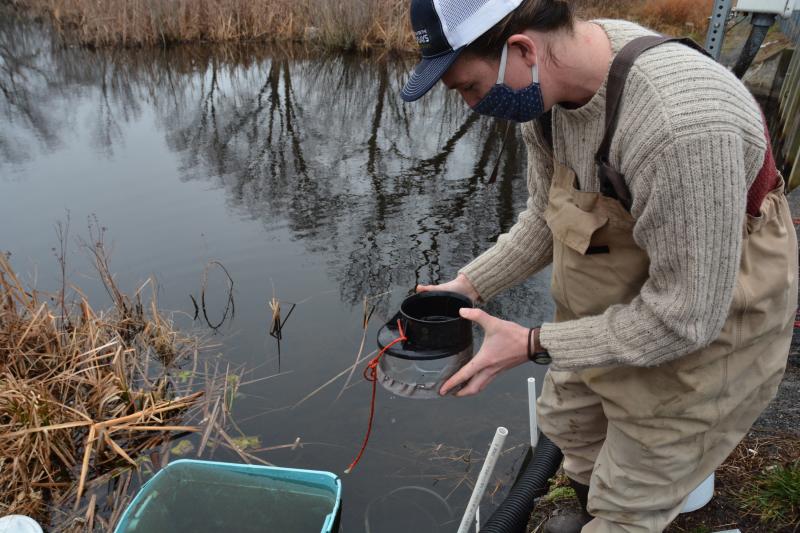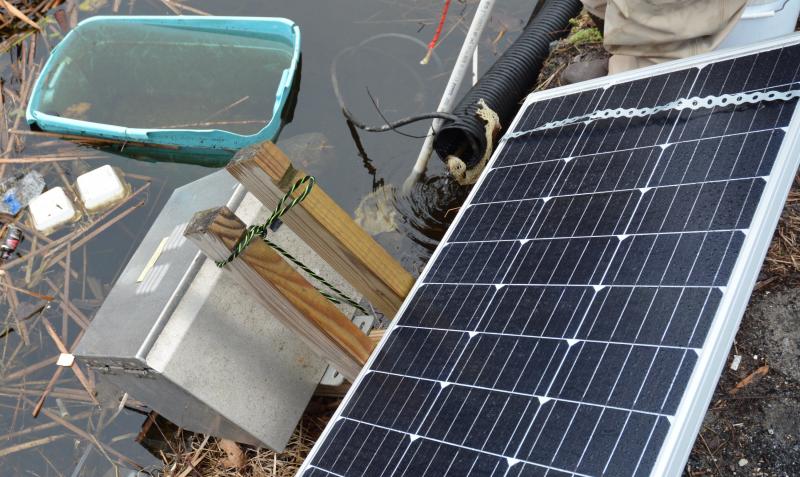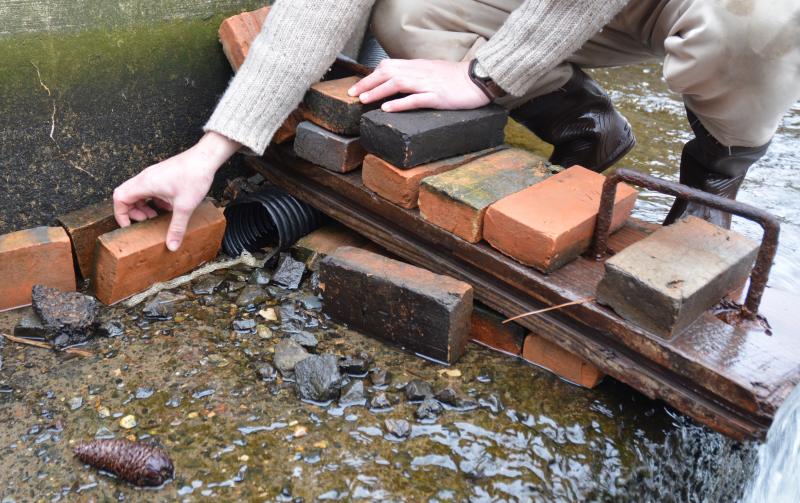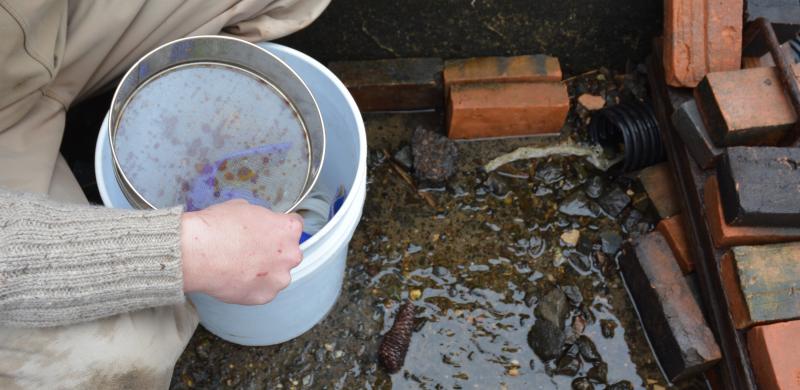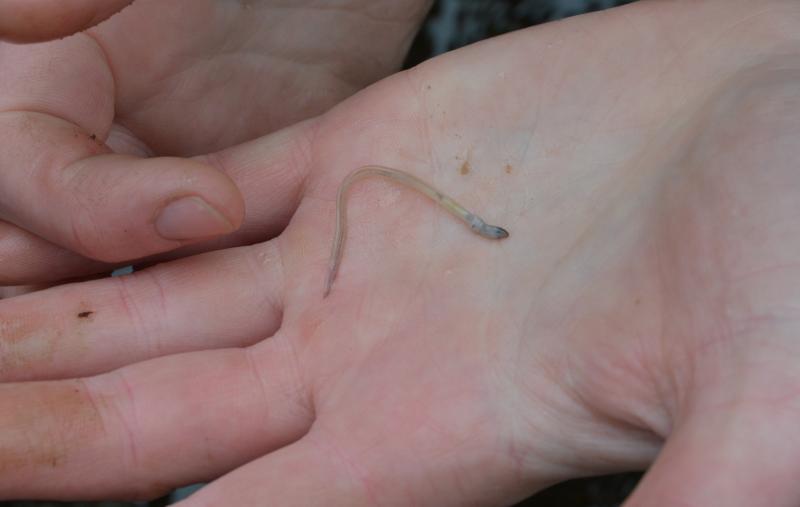Sussex’s freshwater streams are ideal habit for eels to grow
Every year, hundreds of thousands, possibly millions, of larval eels take an ocean-current-propelled ride from the Sargasso Sea to the freshwater streams and rivers of the eastern United States, where they will grow for years before returning to the sea as adults to reproduce.
Zach Garmoe, Center for the Inland Bays science technician, said the two-inch-long babies, called glass eels because they’re translucent at this stage in life, aren’t strong enough to propel themselves, so they float along ocean currents until they reach the mouth of an estuary or river. He said they may drift for a year or more before reaching a suitable body of water in Delaware or elsewhere.
The problem for the eels, said Garmoe, is that an estimated 88 percent of all freshwater streams in the mid-Atlantic, including those in Delaware, have been blocked by dams. For that reason, the center has installed eelways, or eel ladders, that allow the larvae to travel beyond local dams.
The baby eels, also called elvers, that do make it to Delaware arrive en masse in late February and early March. Garmoe recently showed off one of the center’s ladders, which is located off a stream that originates in Rehoboth Bay. He, and other center representatives, asked for the specific location not to be disclosed because of poaching.
Ultimately, he said, people may find the ladder anyway. Locks only keep out the people who would probably stay away anyhow, he said.
The setup for the ladder is basic. It includes a solar-powered pump in the freshwater side of the dam, which pushes a gentle stream of water through a corrugated pipe that snakes its way down to the brackish waters below the dam. The pipe is lined with a thin cloth that gives the eels something to hold onto while making the climb. Holding the pipe in place at the brackish end is a pile of old bricks that were found on the shores of the stream.
Garmoe said the goal isn’t to be fancy, but effective. He said the eels have the ability to maneuver up and around objects, but the current of freshwater coming over the dam itself is too strong. He said the pumped stream of fresh water attracts the eels to the pipe.
The eels figure out this is an easier way to go and then they thrive in the marsh lands of the Inland Bays, said Garmoe. Adult males are roughly two feet long, but females can grow up to four feet, and some five-footers have been found, he said.
There are multiple eelways in operation. Garmoe said the center has two – the one featured in this story and another – and Delaware Department of Natural Resources and Environmental Control has one.
Garmoe said the center’s ladder saw good eel activity this year, but the data hadn’t been finalized. At the site visited, he said the highest single count last year was 1,302, and in 2019 it was 363.
He explained that the difference in numbers doesn’t mean an increase in eels; it’s more of an indication of the random sampling. Garmoe said monitoring only happens for 24 hours every week, which means peak movement may be missed during sampling. In other words, he said, those numbers don't mean 2019 was inherently worse than 2020, just that fewer eels were using the device to travel upstream during the monitoring.
Eel migration is still somewhat mysterious. The assumption is that they head back to the sea, reproduce and then die, but it’s not known for sure, said Garmoe. The first study showing direct observations of eel migration, using GPS tracking, wasn't published until 2015, he said.
Based on this study and other observations, it likely takes the eels between 40 and 60 days to reach their spawning habitat from the Inland Bays. However, much of that timing depends on where in the Sargasso Sea they spawn, said Garmoe.
Chris Flood has been working for the Cape Gazette since early 2014. He currently covers Rehoboth Beach and Henlopen Acres, but has also covered Dewey Beach and the state government. He covers environmental stories, business stories and random stories on subjects he finds interesting, and he also writes a column called Choppin’ Wood that runs every other week. He’s a graduate of the University of Maine and the Landing School of Boat Building & Design.














